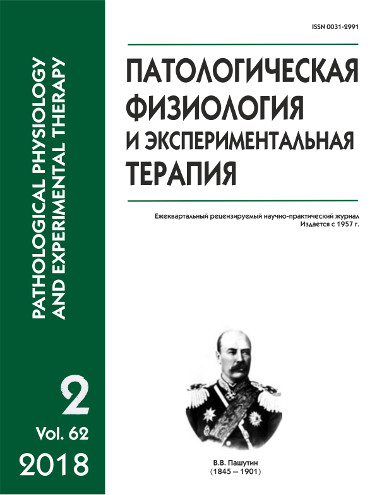Biocompatibility of cornea implants from polymeric materials and bio-artificial cornea in a model of human keratocytes cell culture
Abstract
An in vitro model was proposed for studying biocompatibility and toxicity of polymeric materials in cultures of human corneal stromal cells, keratocytes (KCs). The aim of the present research was to study a possibility of using cultures of isolated human KCs to assess biocompatibility of polymeric materials. Materials and methods. The primary KC culture was obtained from donor's eye cornea and cultured to the 4th passage. The KC phenotype was confirmed by immunocytochemical staining, and the major cell markers were identified. KCs were cultured in the presence of four modifications of bisphenol-A-glycidyl methacrylate (bis-HMA) polymeric materials (24 replicate samples for each modification). Polymethylmethacrylate (PMMA) samples of identical geometry were used in the first comparison group (24 samples). In the second comparison group, KCs were cultured according to a standard procedure without polymer samples (24 wells). In each group, KCs were distributed to 24 wells of the culture plate and cultured for 6 days; cells were counted daily. Based on the dynamics of cell growth and qualitative condition of polymer samples, we made a conclusion about the type of biological compatibility of the materials under study. Results. All cell growth curves had an upward S shape; the number of cells increased statistically significantly from day 2 to day 4 (p<0.05) and slowed by day 6 (p>0.05) to provide adhesion of cultured cells. Conclusion. The study showed a high informative value of the proposed method for determining biological compatibility of artificial materials. All studied materials were classified as biologically active. Samples of the studied materials statistically significantly affected cell adhesion and proliferation in the cell culture.
Downloads
References
2. Williams DF, Dictionary of Biomaterials Liverpool: Liverpool University Press; 1999
3. Hench L., Jones D. Biomaterials, artificial organs and tissue engineering. [Biomaterialy, iskystvennye organy I inzniniring tkaney]. Moscow: Technosfera; 2007. (in Russian)
4. Malyugin B.E., Borzenok S.A., Mushkova I.A., Ostrovskiy D.S., Popov I.A., Shkandina Yu.V. Investigation on the intracorneal lens material biocompatibility using the model of the corneal stromal cell culture. Vestnik transplantologii i iskusstvennykh organov. 2017; 19 (1): 74-81. (in Russian)
5. Danihelová M, Veverka M, Šturdík E, Jantová S. Antioxidant action and cytotoxicity on HeLa and NIH-3T3 cells of new quercetin derivatives. Interdisciplinary Toxicology. 2013; 6(4): 209-16.
6. West-Mays J.A., Dwivedi D.J. The keratocyte: Corneal stromal cell with variable repair phenotypes. The international journal of biochemistry & cell biology. 2006; 38(10): 1625-31.
7. Freshni R.Ya. Culture of animal cells. Practical guidance: Trans. with English. [Kultura zhivotnykh kletok. Prakticheskoe rukovodstvo: per. s angl.]. Moscow; Binom, 2010. (in Russian)
8. Cardona H. Nut and bolt mushroom transcorneal keratoprothesis. American Journal of Ophthalmology. 1969; 68 (4): 604-12.






